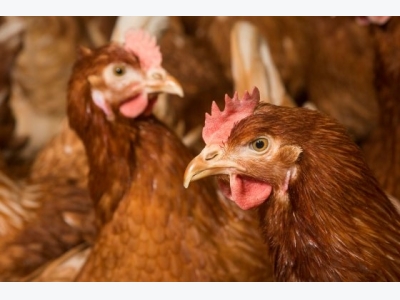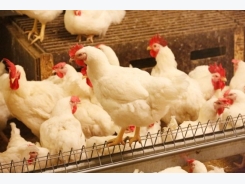Laying hen behaviour: Artificial vs natural ammonia

Laying hens spend less time foraging and were slower to begin to forage in ammoniated environments compared to being out in the fresh air.
Dutch research published last week also found hens were more likely to forage for longer with fewer interruptions in naturally sourced gas mixtures (laying hen excreta) than when exposed artificially to ammonia.
Photo: Koos Groenewold
The researchers from the University of Guelph investigated whether laying hens differentiate between artificially and naturally sourced NH3/air mixtures and how exposure to NH3 affects foraging and aversive behaviour.
Birds exposed to artificial and natural ammonia
A total of 20 laying hens were exposed to artificially sourced (A) ammonia from a cylinder and naturally sourced (N) from laying hen excreta gas mixtures. Hens were exposed to A and N mixtures with ammonia concentrations of 25 and 45ppm as well as fresh air.
During the experiment, all birds were exposed to each treatment three times using a custom-build polycarbonate chamber, containing a foraging area containing raisins, mealworms and feed mix and a gas delivery system. All testing sessions were recorded and analysed.
Results suggest that hens prefer fresh to ammoniated air
The results showed that the laying hens spent less time foraging overall (P<0.001) and were slower to commence foraging (p="0.04)" in ammoniated environments compared to fresh air.
Laying hens were more likely to forage for a longer time in N than in A treatments. Laying hens also reacted with greater aversion towards treatment A compared to treatment N.
The researchers said the findings suggested that laying hens in the study “preferred fresh to ammoniated air and that they behaved differently in artificially and naturally sourced NH3 /air mixtures, possibly due to the presence of familiar stimuli from the excreta.
“These findings have implications for new developments in methodological approaches for behavioural testing and recommendations regarding ammonia levels inside poultry barns.”
The study, “Laying hens behave differently in artificially and naturally sourced ammoniated environments,” has been published in Poultry Science (October 5)
Có thể bạn quan tâm
Phần mềm

Phối trộn thức ăn chăn nuôi

Pha dung dịch thủy canh

Định mức cho tôm ăn

Phối trộn phân bón NPK

Xác định tỷ lệ tôm sống

Chuyển đổi đơn vị phân bón

Xác định công suất sục khí

Chuyển đổi đơn vị tôm

Tính diện tích nhà kính

Tính thể tích ao hồ




 Reduce woody breast and white striping with dietary…
Reduce woody breast and white striping with dietary…  Clever marketing can lift your egg price
Clever marketing can lift your egg price